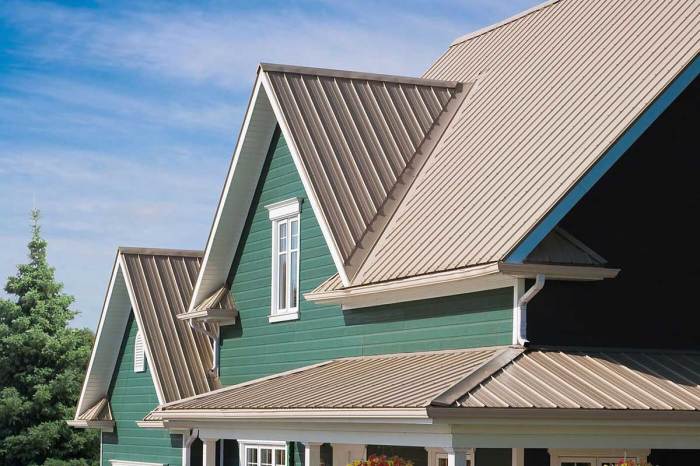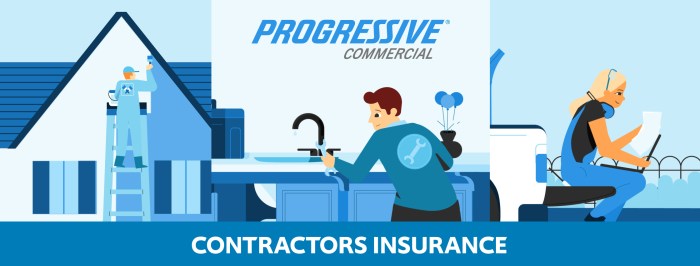Delve into the world of roof siding with this comprehensive guide, where we uncover the various materials, installation methods, maintenance tips, and cost considerations. Get ready to learn all about siding on roofs in an engaging and informative manner.
Types of Siding Materials for Roof
When it comes to siding materials for roofs, there are several options available, each with its own set of characteristics, pros, and cons.
Asphalt Shingles
- Asphalt shingles are the most commonly used siding material for roofs.
- They are affordable, easy to install, and come in a variety of colors and styles.
- However, they have a relatively shorter lifespan compared to other materials and may not be as durable in extreme weather conditions.
Metal Roofing
- Metal roofing is known for its durability and longevity.
- It is resistant to fire, rot, and insects, making it a low-maintenance option.
- On the downside, metal roofing can be noisy during rain or hailstorms and may be more expensive upfront.
Wood Shingles
- Wood shingles provide a natural and rustic look to a roof.
- They are eco-friendly and offer good insulation properties.
- However, wood shingles require regular maintenance, are susceptible to rot and mold, and may not be as fire-resistant as other materials.
Vinyl Siding
- Vinyl siding is a cost-effective option that is easy to clean and maintain.
- It comes in a wide range of colors and styles, offering versatility in design.
- However, vinyl siding may crack or fade over time and is not as environmentally friendly as other materials.
Installation Methods for Roof Siding
Installing siding on a roof requires careful planning and the use of appropriate tools and techniques to ensure a durable and aesthetically pleasing finish. Let's explore the step-by-step process of installing roof siding, the tools and equipment needed, and compare different installation techniques.
Step-by-step Process of Installing Roof Siding
- Prepare the roof surface by cleaning and removing any debris or old siding.
- Measure and cut the siding panels to fit the dimensions of the roof, ensuring proper overlap and alignment.
- Install the starter strip along the bottom edge of the roof to provide a secure base for the siding panels.
- Begin installing the siding panels from one end of the roof, working your way across and up towards the peak.
- Secure the siding panels in place using appropriate fasteners, such as nails or screws, ensuring they are properly spaced and aligned.
- Finish the installation by adding trim pieces, corner caps, and other accessories to complete the look and provide additional protection.
Tools and Equipment Needed for Installing Roof Siding
- Hammer or nail gun
- Screwdriver or screw gun
- Tape measure
- Siding cutter or saw
- Ladder or scaffolding
- Level
- Caulk and caulk gun
Comparison of Different Installation Techniques for Roof Siding
| Technique | Advantages | Disadvantages |
|---|---|---|
| Horizontal Installation | Easy to install for beginners | May not be suitable for all roof designs |
| Vertical Installation | Provides a unique look | Requires more precise measuring and cutting |
| Diagonal Installation | Offers a modern and visually interesting design | Can be more challenging to install |
Maintenance Tips for Roof Siding
Proper maintenance of roof siding is essential to ensure the longevity and structural integrity of your home. Regular inspections and care can help prevent damage and costly repairs in the future.
Regular Inspections
- Inspect the roof siding at least twice a year, ideally in the spring and fall, to check for any signs of damage or wear.
- Look for cracks, holes, or gaps in the siding that could allow water to seep in and cause rot or mold.
- Check for any loose or missing pieces of siding that need to be repaired or replaced.
Cleaning and Maintenance
- Regularly clean the roof siding with a mild detergent and water to remove dirt, debris, and mold buildup.
- Trim any trees or branches that may be touching or rubbing against the siding to prevent damage.
- Paint or seal the siding as needed to protect it from the elements and extend its lifespan.
Weather Conditions
- Extreme weather conditions such as heavy rain, snow, or high winds can accelerate wear and tear on roof siding.
- Inspect the siding after severe weather events to identify and address any damage promptly.
- Consider investing in weather-resistant siding materials to withstand harsh weather conditions.
Cost Considerations for Roof Siding
When it comes to choosing roof siding, cost is a significant factor to consider. The overall cost of roof siding installation can vary depending on several factors, including the type of siding material chosen, the size of the roof, labor costs, and any additional features or customization.
Comparing the Cost of Different Siding Materials for Roofs
- Vinyl Siding: Vinyl siding is one of the most affordable options for roof siding. It typically costs between $2 to $7 per square foot, making it a budget-friendly choice for homeowners.
- Wood Siding: Wood siding tends to be more expensive, ranging from $5 to $10 per square foot. While it provides a natural and rustic look, it may require more maintenance over time.
- Fiber Cement Siding: Fiber cement siding falls in the middle range, costing around $5 to $12 per square foot. It offers durability and low maintenance, making it a popular choice for many homeowners.
- Metal Siding: Metal siding can range from $5 to $15 per square foot, depending on the type of metal used. While it is durable and provides excellent protection, it may be pricier than other options.
Ways to Budget Effectively for Roof Siding Installation
- Get Multiple Quotes: Always obtain quotes from multiple contractors to compare prices and services offered. This will help you find the best deal for your budget.
- Consider Long-Term Costs: While upfront costs are important, also think about the long-term maintenance and durability of the siding material. Investing in quality materials may save you money in the long run.
- Plan Ahead: Budgeting for roof siding installation requires careful planning. Set aside extra funds for any unexpected expenses that may arise during the installation process.
- Explore Financing Options: If the cost of roof siding installation is a concern, look into financing options or payment plans offered by contractors to make the project more manageable.
Final Conclusion

As we wrap up our exploration of siding on roofs, remember that proper maintenance, careful installation, and wise material choices are key to a long-lasting and visually appealing roof. Stay informed and make the best decisions for your home's exterior.
Essential Questionnaire
What are the common materials used for roof siding?
Common materials include vinyl, wood, fiber cement, and metal.
How can I maintain roof siding?
Maintain roof siding by regularly cleaning, inspecting for damage, and addressing issues promptly.
What factors affect the cost of roof siding?
Factors such as material choice, installation complexity, and size of the roof can influence the cost of siding.









